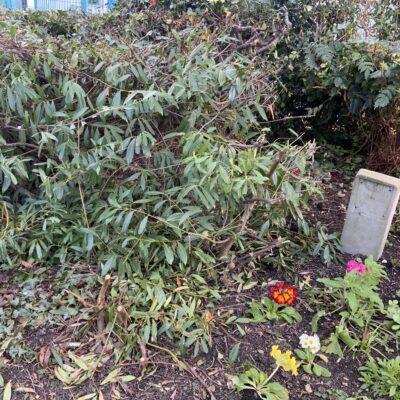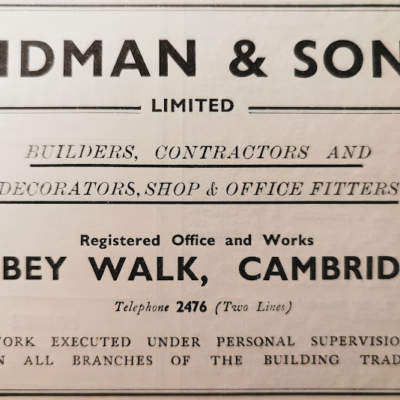Search by topic
- archaeology
- architecture
- bricklayer
- Building of Local Interest
- carpenter
- church
- crime
- dressmaker
- fire
- general labourer
- Great Eastern Railway
- listed building
- medieval
- oral history
- Public House
- Rattee & Kett
- Roman
- scholar
- school
- Then and Now
- tudor
- women
- work
- world war one
- world war two
Search by text
 No. 90 Ainsworth Street: Adelaide Cottage. Built in 1870.
No. 90 Ainsworth Street: Adelaide Cottage. Built in 1870.90 Ainsworth Street
90 Ainsworth Street, Adelaide Cottage
Number 90 is a mid-terrace house on the east side of Ainsworth Street. It carries a plaque reading Adelaide Cottage 1870.
The 1871 census records 21 inhabited houses in Ainsworth Street, plus another 9 under construction. However, they are not numbered, and at present it is not possible to identify all of them. The plaque dated 1870 should in theory tell us that the house was inhabited in 1871, but some plaques were added later, and the date may not always be accurate.
1881 census
Eliza Undrill, wife, 36, b. Camberwell, London
Arthur Gee, boarder, 14, scholar, b. Cambridge
Alfred Gee, boarder, 12, scholar, b. Cambridge
Henry Gee, boarder, 9, scholar, b. Cambridge
1891 census
Henry Jackson, head, 51, tailor, b. Cambridge
Mary Jackson, wife, 48, nurse, b. Cambridge
Adelaide Pryor, niece, 25, assisting in house, b. South Australia
Albert Pryor, nephew, 6 mo, b. Cambridge
The 1891 census gives ‘nurse’ as Mary Jackson’s occupation, but there is an additional note in another pen saying ‘sick’. It is possible she worked in a council institution such as the Workhouse at Ditchburn Place or the Infectious Diseases Hospital on Mill Road. Or perhaps she worked at the Leys School Sanatorium, around the corner on Hooper Street.
Albert Pryor, aged just 6 months, is described as the Jacksons’ nephew. His birth certificate tells us that he was actually the son of Adelaide Pryor. His father’s name is unknown.
Adelaide was named after her birthplace, Adelaide in Australia. She was born there in 1866, the daughter of Stephen Pryor and Emily Topping, who married in Dunmow, Essex in 1856 and then emigrated. Evidently Stephen Pryor had died when Adelaide was very young, because by 1871, aged 4, she and her mother Emily were back in England. Emily had recently married retired farmer Hills Harrison, and they were living at 6 Jesus Terrace, Cambridge. They shared the house with Emily’s mother Jane Topping, sister Mary Jackson and Mary’s family. Emily died in 1878, and Adelaide was then brought up by her aunt Mary and uncle Henry Jackson, alongside their own daughter Clara. In 1881 the family were living at 1 Proctor’s Buildings, Norfolk Street, a few doors along from Adelaide’s stepfather Hills Harrison and her half-brother Harry. By 1891 Adelaide and the Jacksons had moved to Ainsworth Street.
1901 census
Henry Jackson, head, 61, tailor, b. Cambridge
Mary Jackson, wife, 59, sick monthly nurse, b. Cambridge
Clara Jackson, daughter, 38, tailoress, b. Cambridge
Albert Pryor, adopted, 10, b. Cambridge
Albert had effectively become the Jacksons’ adopted son. Clara Jackson was married, but her husband Herbert Fordham was lodging separately in Lewisham, London. The 1911 census (see below) tells us that they had had a child who had died, and Clara was now bringing up her cousin’s child instead. No record has yet been found of Adelaide’s whereabouts in 1901.
1911 census
Henry Jackson, head, widower, 71, tailor, at home, Cambridge
Clara Fordham, daughter, married, 47, housekeeper, b. Cambridge
Harry Pryor, visitor, single, 20, grocer shopman, b. Cambridge
(Clara Fordham: 20 years married, 1 child who died)
By 1911, Mary Jackson had died, and Henry was to die a few years later in 1914.
On the 1911 census form, Clara is using her married name Fordham, and Albert – now going by his middle name Harry – is described as a ‘visitor’.
In 1911, however, Adelaide can be located: she was living at 156 Chesterton Road, working as a servant for university lecturer Reginald Gregory, his wife Joan and their baby daughter. Joan was born in Tasmania, as was the baby’s nurse. Had Adelaide spent the intervening years in Australia, and then travelled back to England while working for Joan’s family?
This story ends on a sad note. By 1921, Adelaide was an inmate at Cambridgeshire County Asylum, now Fulbourn Hospital. Her burial record from 1935 shows that she remained there until she died.
We are also left with a mystery to solve. The plaque on the façade of 90 Ainsworth Street – Adelaide Cottage 1870 – is no coincidence: Adelaide actually owned the house! The 1910 land tax records state that the house was owned by Miss A Pryor, with her address registered at 156 Chesterton Road. So she owned it in 1911, when her son, her cousin and her uncle were living there but she herself was a live-in servant on the other side of town. She owned it in 1921, when she was a patient in an asylum. Her probate record tells us that she still owned it at her death in 1935, and – we might guess – left it to Albert, the executor of her will.
But how did she come to own the house? Did her father make a modest fortune in Australia in the 1860s, which her family then invested in Cambridge property on her behalf? Was she the mistress of a wealthy man, who bought her a house around 1890 when Albert was born? Or did she somehow earn enough to buy it herself?
1921 census
Arthur J Oliver, head, 28, acetylene welder & fitter, Allin & Sons, 12 Bridge St, b. Cambridge
Constance M Oliver, wife, 27, domestic, home, b. Cambridge
Arthur S W Oliver, son, 3, b. Cambridge
Source: 1841–1921 England Census, Essex Select Church of England Parish Registers 1518–1960, Australia Birth Index 1788–1922, England & Wales Civil Registration Death Index 1837–1915, England & Wales Civil Registration Birth Index 1837–1915, Cambridgeshire Burials records, National Burial Index For England & Wales
Contribute
Do you have any information about the people or places in this article? If so, then please let us know using the Contact page or by emailing capturingcambridge@
License
 This work is licensed under a Creative Commons Attribution-NonCommercial-ShareAlike 4.0 International License.
This work is licensed under a Creative Commons Attribution-NonCommercial-ShareAlike 4.0 International License.










